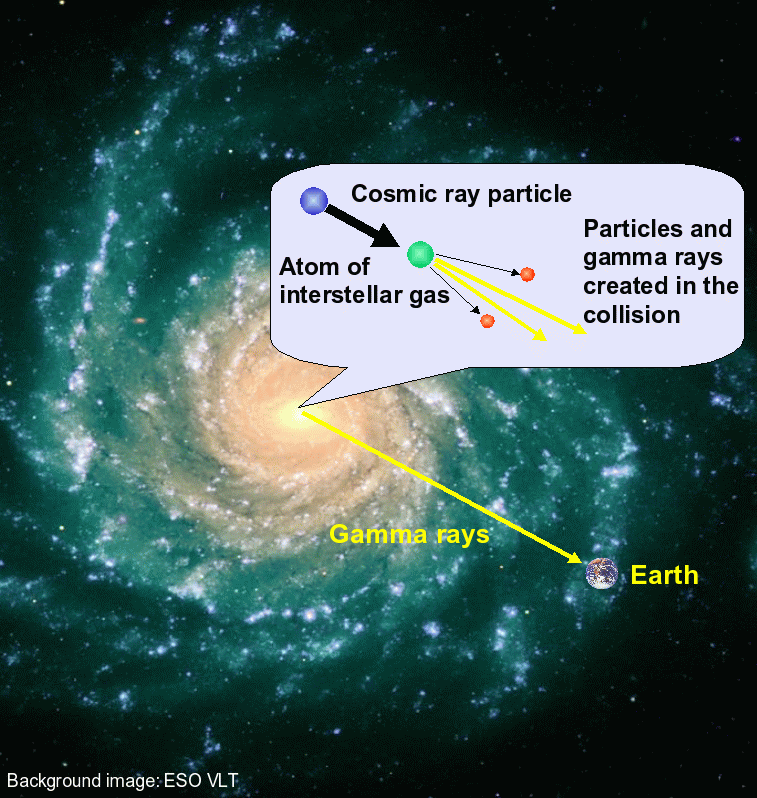Gamma rays strike Earth from all directions of the sky. Our planet is bathed in a diffuse glow of high-energy photons. It doesn’t affect us much, and we don’t really notice it, because our atmosphere is very good at absorbing gamma rays. It’s so good that we didn’t notice cosmic gamma rays until the 1960s when gamma-ray detectors were launched into space to look for signs of atomic weapons tests. Even then, what we noticed were intense flashes of gamma rays known as gamma ray bursts.
Gamma-ray bursts are bright but short-lived. They are so bright that it was first feared they were caused by nuclear blasts on Earth, but we now know they are caused by large dying stars as their core collapses into a black hole. The collapse can trigger the formation of jets of material streaming away from the star at nearly the speed of light. When the jet collides with interstellar gas, it creates a beam of gamma rays. If the jet of a dying star happens to be pointed in our direction, we detect a gamma-ray burst.
As our gamma-ray telescopes became more sensitive, we also detected a galactic gamma-ray glow. Most of these gamma rays come to us from the plane of the Milky Way and are caused by high-energy particles that collide with interstellar gas and dust in our galaxy. There are gamma rays that come from the active galactic nuclei of distant galaxies. They are created when supermassive black holes consume matter near them. But if you exclude gamma rays from all those known sources, there is still a faint, diffuse glow of gamma rays. They come to us from all directions, even from regions that seem to be empty space. We’ve never been able to figure out the source of this faint background, but a new paper in Nature seems to have solved this mystery.

The team looked at how gamma rays can be produced by cosmic rays. Cosmic rays are extremely energetic particles, typically protons moving at nearly light speed. These cosmic ray particles sometimes strike our atmosphere to create a cascade of particles we can detect on the surface. But cosmic ray collisions can also create gamma rays. The team thought the faint gamma-ray background might be caused by cosmic rays striking gas and dust in distant galaxies. Since most of the gas and dust in a galaxy is found in star-forming regions, the team compared the gamma-ray background to the distribution of galaxies actively forming stars. They found that star-forming regions in galaxies could be the source of diffuse gamma rays.
When high-resolution gamma-ray telescopes such as the Cherenkov Telescope Array are built, maps of the gamma-ray background could further confirm this model. It could also let us study star-forming regions in a new way, and might help us better understand the origin of cosmic rays.
Reference: Roth, Matt A., et al. “The diffuse gamma-ray background is dominated by star-forming galaxies.” Nature 597.7876 (2021): 341-344.

